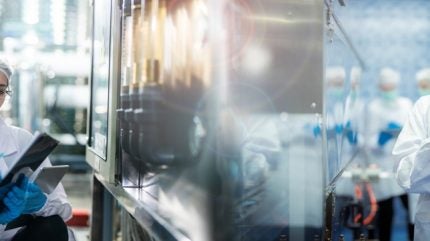
Everyday items arrive at our doors wrapped in layers of packaging—some protective, some promotional, and much of it disposable. Yet behind this often-overlooked layer lies a fast-evolving field that is reshaping how we store, transport, and consume products.
Recent breakthroughs in packaging materials science are addressing long-standing issues such as plastic waste, food spoilage, and excessive carbon emissions, ushering in a new era of smarter, greener, and more efficient packaging.

Discover B2B Marketing That Performs
Combine business intelligence and editorial excellence to reach engaged professionals across 36 leading media platforms.
Biodegradable materials gaining ground
With growing public concern over plastic pollution, researchers have been intensifying efforts to develop biodegradable packaging that doesn’t compromise performance.
Compostable bioplastics derived from natural sources such as corn starch, sugarcane, and even seaweed are now leading the way.
Polylactic acid (PLA), for instance, has gained popularity for being both compostable and relatively easy to manufacture. Meanwhile, new blends of biodegradable polymers are overcoming challenges such as brittleness and limited shelf life.
Another area of innovation involves mushroom-based packaging. Grown from mycelium—the root structure of fungi—this lightweight, durable material can replace polystyrene in protective packaging.

US Tariffs are shifting - will you react or anticipate?
Don’t let policy changes catch you off guard. Stay proactive with real-time data and expert analysis.
By GlobalDataIt’s mouldable, cost-effective, and fully compostable, breaking down in soil within weeks. Similarly, agricultural waste such as husks and stalks is being converted into moulded fibre trays and boxes, offering an eco-friendly alternative to traditional plastic containers.
What makes these biodegradable materials especially compelling is their ability to mimic the functional properties of conventional plastics without the long-lasting environmental footprint.
However, successful adoption still hinges on improving scalability and integrating these alternatives into existing supply chains, especially in high-volume sectors like food and retail.
Smart packaging technologies enhancing product life and safety
Beyond sustainability, another key focus in packaging innovation is functionality.
Smart packaging—also referred to as active or intelligent packaging—incorporates cutting-edge materials that interact with the contents or the external environment to extend shelf life and improve user safety.
One of the most exciting developments in this space is the use of oxygen scavengers and antimicrobial films. These advanced materials prevent oxidation and microbial growth in packaged food, significantly reducing spoilage.
Packaging infused with natural compounds such as essential oils or silver nanoparticles is already being used in meat, dairy, and fresh produce sectors to inhibit bacterial activity without synthetic preservatives.
Time-temperature indicators (TTIs) and freshness sensors are also gaining traction. These indicators, often printed directly onto packaging films, give real-time feedback on the condition of perishable goods.
Consumers and retailers can quickly assess whether a product has been exposed to temperatures that could compromise safety, helping to reduce food waste and improve trust in product quality.
Such innovations are particularly relevant in the pharmaceutical and healthcare industries, where temperature-sensitive medications and vaccines demand strict storage conditions.
Intelligent packaging materials that monitor environmental factors or track shipment conditions are playing a vital role in maintaining efficacy and reducing costly spoilage.
Recyclable and reusable designs supporting a circular economy
While novel materials are crucial, rethinking the design of packaging itself is equally important.
Innovations in recyclable and reusable packaging are helping to close the loop and support the principles of a circular economy—where materials are kept in use for as long as possible, and waste is minimised.
Mono-material packaging, made from a single type of plastic or fibre, is easier to recycle than multi-layer composites that combine different materials. Companies are moving away from complex laminates and towards simplified designs that retain functionality while improving recyclability.
For example, polyethylene-based pouches, which were once difficult to recycle due to layers of foil or PET, are being reformulated for compatibility with existing recycling systems.
Reusable packaging is also making a comeback, particularly in e-commerce and grocery delivery. Durable containers made from recycled polypropylene or silicone can be returned, washed, and reused multiple times, cutting down significantly on single-use waste.
Pilot schemes across Europe are testing systems where consumers return packaging via designated collection points or pick-up services, encouraged by digital tracking and deposit-return incentives.
Even labels and adhesives are being re-engineered to improve recyclability. Water-soluble inks, residue-free glues, and peelable seals make it easier to process and reuse materials without contamination.
These small yet impactful changes contribute to a more efficient recycling system and help reduce the demand for virgin raw materials.
Looking ahead
Breakthroughs in packaging materials science are quietly revolutionising the way we engage with everyday products.
From biodegradable alternatives to plastic, to intelligent films that preserve food and monitor temperature, and streamlined packaging designed for reusability and recycling, the sector is undergoing rapid transformation.
As environmental pressures mount and consumer awareness grows, these innovations are not just optional—they are essential. The future of packaging lies not only in reducing waste but in creating smarter, safer, and more sustainable systems that serve both people and the planet.
Businesses, scientists, and consumers alike have a role to play in embracing and accelerating these advances—because the packaging of tomorrow starts with the choices we make today.





